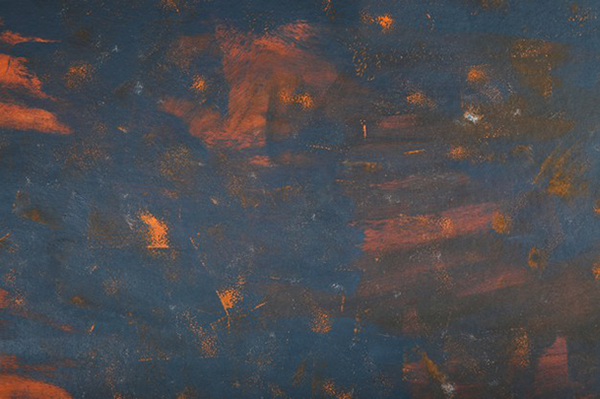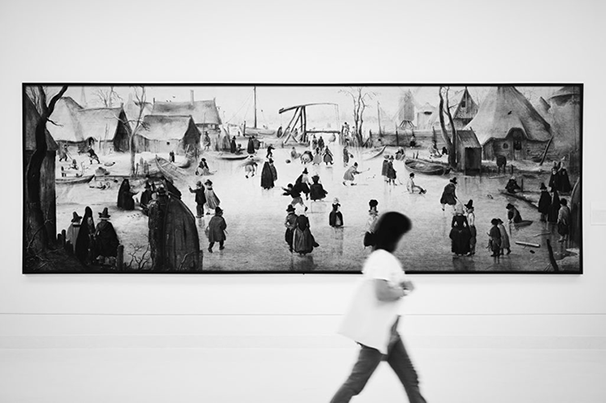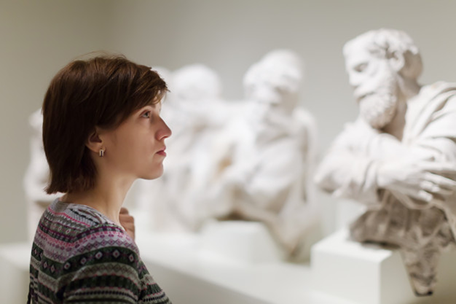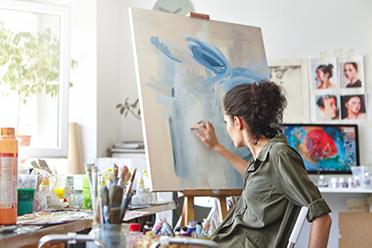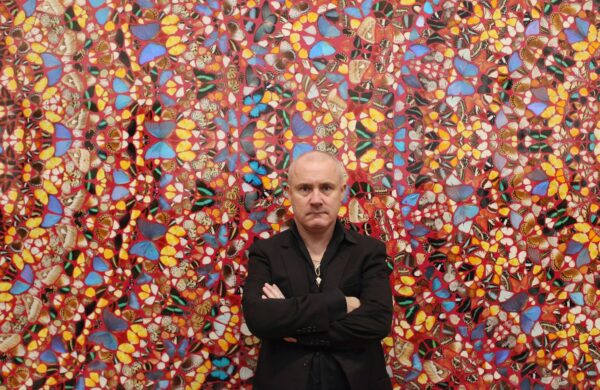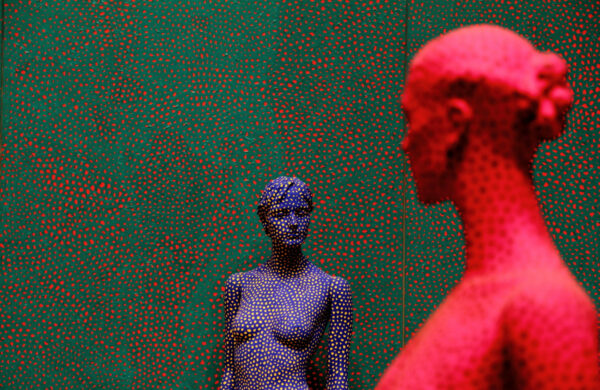Is Art Truly Subjective? The Debate Goes On…
We all have our own culture, values, and opinions that undeniably end up defining and influencing our taste and preferences on different subjects. Art is without a doubt subjective… Right? At least it’s what we’re told. But, honestly, if art is so subjective why were some white canvas chosen to be displayed in the biggest museums in the world and others aren’t? Who decides and defines good art vs bad art? Are famous artists more skilled than the average one?
Perhaps if my favourite colour is black but yours is blue, it doesn’t make my preference any better than yours, because it’s only a personal preference. However, if I say that Basquiat is the best artist in the world but you say it is Warhol, there’s enough records and documentation that prove that Da Vinci might be classified as the greatest of all time.
Art always brings up a lot of conflicting opinions. Nothing is that black and white, and specifically when we talk about art. The value we give to art can definitely be subjective.
There are a lot of circumstances that go into our perceptions of whether art is good or not. So, without further a due, let’s dive into a few of them.
Subjectivity… To some extent
Art is subjective because we see things and interpret what we see differently than one another. Consequently, popular opinion can be highly manipulated by the amount of fame of one particular artist, the amount of mediatic exposure and recognition, and the social trends going on when following the latest events in the art world. It’s inevitable, opinions will change over time and so can our perception of art.
Even if we consider the appreciation of an artwork relative, if an artist wants to be featured in a museum, the process is quite objective:
– Recognition; the artist must have participated in tons of exhibitions, nationally and internationally. Without exhibitions, there’s no recognition and without recognition, there’s virtually no interest in displaying works of artists that haven’t been exhibited anywhere.
– The artist’s works have to ignite the interest of collectors besides the general public. The artworks cultural, social and political context needs to be relevant and appropriate, otherwise, there’s no public nor private investment.
Lastly, the artists must have a certain level of media coverage surrounding them. Without it, there’s also no recognition and without recognition, – again, there’s no interest in their work…
Why Subjectivity is Good in Art
Ok, so for example, at Mariana Custodio we only focus on contemporary art and even inside contemporary art we focus more on abstract expressionism than on figurative expressionism, still that doesn’t mean that figurative art is bad or less worthy, that is only our personal preference. The fact that we all appreciate art in different ways is what gives artists the freedom to create whatever they feel called to create.
How awful would it be if we decided that there’s only one type of art? We wouldn’t have so many amazing styles or nor creative movements. The fact that we can all unanimously decide what types of art we like allows room for many more art styles to coexist, giving us the opportunity to learn about what we like and what we identify the most with.
Liking Something vs It Being Good
Just because I enjoy looking at a painting doesn’t mean that I think that its aesthetic and technical quality is good. I can enjoy a lot of books but, – again it does not mean that I like them all or that I think the quality of each one of them is great. The same applies to music, movies, fashion and of course art.
When a work of art isn’t judged by experts, where are can we assess objective criteria that tell us whether art is good or bad? I don’t know if you’ve experienced the same but I’ve never gone into a gallery to find a selection with all of the criteria and the necessary requirements for an artwork to be considered good. Some will say that the fact that it’s in a gallery to begin with, is the ultimate evidence that it’s good… However, we’ve all seen some questionable works in galleries… In this way, subjective responses bleed into the “objective” state of things. So we can’t exactly rely on institutions to be in charge of evaluating and deciding what is art and whether it’s good.
So, when we don’t have objective standards to use when we form our opinions of art, how do we decide what is good art?
How Do We Decide What is Good Art
We are constantly shown different opinions, perspectives, criticisms, and more. We are constantly challenged to defend our points of view and to stand up for causes we believe in. We are continually discovering new artists and deciding what we value in the art world.
It’s particularly difficult to unanimously and universally come to a decision about art when everyone has a different opinion about it… If everything we like, hate or feel indifferent about has been shaped by our life experiences, it’s nearly impossible to weed out everything that could have influenced the reasons why we like a piece of art and simply look at it objectively. So, should we worry that subjective opinion is influenced by the world we live in? Wouldn’t this mean that we’re forming opinions with a very particular perspective on our own experiences? The answer is yes…!
We put a lot of value in trying out new things, seeing the world, and meeting new people. And those are the first steps that will get us closer to deciding whether an artwork is good or bad. This is a very democratic process, opinions on subjective matters are formed when we take a look around, when we compare, analyse and experience different scenarios. What you experienced in the past and what you choose to expose yourself to now plays a great role in the way we, as a community, seek out art and form opinions about it. If we don’t see enough, we might not have enough information to make valid and informed opinions…
Popularity Influences our Opinion About Art
Artists with more visibility are usually the ones that make the most impact. Therefore, when something becomes popular, it usually increases in likability. A lot of that comes from the amount of exposure they already have. When something becomes popular, it gets people talking. Given technology these days, this can really favour artists that understand how to use social media…
Right, so naturally, a specific artwork is more attractive when people know it exists. You can’t like something or decide the aesthetic value of a piece when you don’t know exists. Once visibility spreads and something becomes popular and mainstream, people will simply gravitate towards it. Without questions to ask, it’s easier to accept what comes to us, we tend to agree more on what is easier to hear or is more convenient at the time. It’s very common to believe we like a piece of art more than we do just so that we can have a deeper communal connection to a group.
How Artists Themselves Influence Subjectivity
We often feel a lot of loyalty towards the artists we know and admire. Oftentimes we tend to support them and their work despite actually considering if what they produce is good or bad. We tend to become biased in relation to what we know we already like. We have empathy towards people we admire so we regularly favour them and put them on a pedestal even if we don’t like what they’re making.
So this is definitely another aspect to have in consideration when evaluating art. If an artist already has a following and an established fan base, it’s more likely that the artist’s work is considered good and valid, despite any technicalities their work might have against it.
When thinking about the style art that you like, look to your absolute preferred artist as a hub. What other artists alike come out from that hub? A lot of times you’ll see that your favourite artists sent you down a pathway of discovery with other artists in that style. It’s not a bad thing, but just a way to see how your subjective perspectives can get biased more easily.
The Dilemma
To foreground subjectivity as the most appropriate response to a work of art threatens to overlook the fact that tastes and preferences do in fact change over time, just as morals and public standards change too. Yet, subjective taste has a historical dimension, even if we prefer to think it doesn’t…
In art, we tend to place lot of emphasis on originality and creativity, right? But with the neverending shift in traditions and cultures, there are many examples of artistic “revolutions” that have failed to meet with the tastes of society at the time, only to be subsumed into the conventional appetites of later generations. For example, the Impressionist paintings of Monet and Cezanne. One critic back then complained that both of their paintings were half-finished sketches.
The ways that people look at the world around them — at works of art or anything else — are prone to influence from so many other spheres, from political upheavals to technological advances. What counts as “knowledge”, “proper behaviour”, “judgement” and “good taste” never stay the same.
Will art ever become an objective subject? Porbably not. In retrospect, no; it’s almost impossible to value an artwork as good and valid forever.
Conclusion
- We cannot help but unconsciously build a criterion for what counts as valuable: for what type of work we think should be shown in galleries, what the art market should treat as valuable, who should win art competitions, and all the other practical ways that some artists’ work rises to the top whilst other artists’ work disappears without a trace.
- At the end of the day, our subjective opinions are built by personal experiences and cultural background.
- The unique thing about Art is about developing our own subjective opinions on why we love specific artists. Without subjectivity, art would lose a lot of what makes it so great in the first place.
- If an artist already has a following and an established fan base, it’s more likely that the artist’s work is considered good and valid, despite any technicalities their work might have against it.
- Artists with more visibility are usually the ones that make the most impact. Therefore, when something becomes popular, it usually increases in likability.
